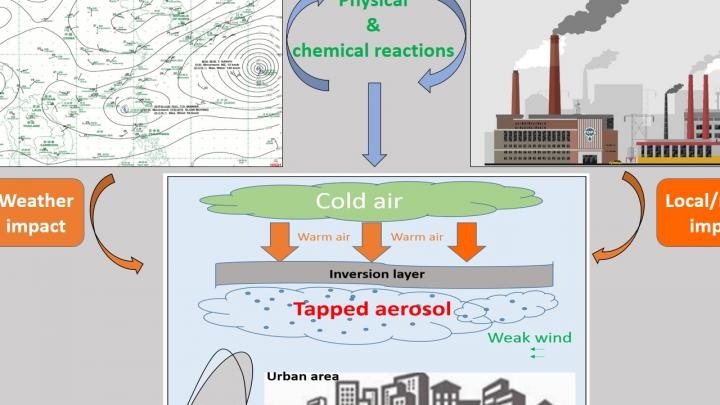Jun 27 2018
 An illustration of how unfavorable weather conditions and emissions result in haze pollution in urban areas. Image credit: Nan Wang.
An illustration of how unfavorable weather conditions and emissions result in haze pollution in urban areas. Image credit: Nan Wang.
Haze pollution is the combined effect of regional transport, chemical reactions, and emissions under unfavorable climatic conditions. Understanding the mechanisms underlying haze formation can be fortified through the use of numerical simulation. Consequently, policymakers could be benefited and efficient control strategies should materialize.
Dr Nan Wang, from the Institute of Tropical and Marine Meteorology, China Meteorological Administration, and Dr Zhenhao Ling, from Sun Yat-sen University, gathered historical data related to haze episodes and categorized them in relation to the associated synoptic weather systems.
The scientists used numerical simulation to summarize the properties of the contributions of source regions to fine-particle pollution under the most frequent unfavorable weather conditions in Guangzhou—a typical city in the important Pearl River Delta region of China.
They propose that contributions of source regions demonstrated considerable differences when they are regulated with the help of different synoptic systems. The research was recently published in the Advances in Atmospheric Sciences journal.
Our statistical results show that SP [‘sea high pressure’] and FC [‘foreside of a cold front’] are the most frequent unfavorable weather systems in the PRD [Pearl River Delta region]. Usually, Siberian cold high pressure, the predecessor of SP, moves easterly to the sea, forming a weaker but warmer SP. After that, SP extends to southern China and dominates the PRD.
A stationary atmosphere can be found and local emissions are the main cause of haze events. However, an FC-affected event means that the convergence of warm and cold air flow occurring to the northwest of the PRD will result in northerly wind prevailing over the PRD.
Pollutants from upwind areas become the main factor. Therefore, policymakers can develop more efficient control plans by incorporating weather system analysis when haze events occur.”
Dr Zhenhao Ling, Lead Author
Dr Zhenhao Ling further elucidated that emissions and meteorological conditions are the two principal factors that lead to haze pollution, and that chemical transport models could be useful in quantifying their relative effects and thus offer scientific guidance for government decisions in relation to emission control measures.